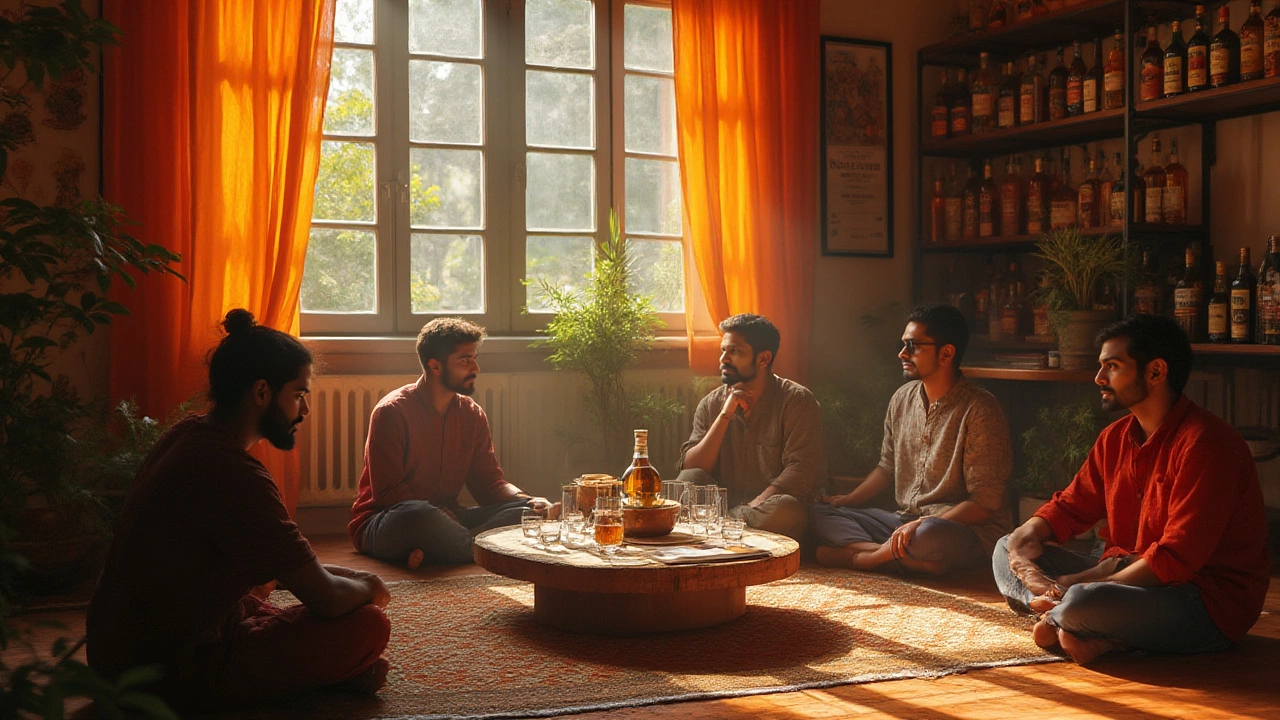
Did you know the flavor in a single glass of whiskey can come from dozens of different chemical compounds, some with names like vanillin or furfural? That’s why, when you swirl whiskey in your glass, it might smell like apple pie, leather, or salty caramel—sometimes all at once. The world of whiskey can look intimidating, all those mysterious bottles, baffling labels, and experts who seem to disagree about everything. But here's the secret: starting a whiskey tasting is way less complicated than it looks. And it’s supposed to be fun. If you can tell the difference between apple juice and grape juice, you can absolutely do a whiskey tasting—even if you don't have a fancy collection.
Choosing the Right Whiskeys and Tools
First things first: what kind of whiskey do you want to taste? If you’re new to this, the range can make your head spin long before you take a sip. There are single malts, blends, bourbons, ryes, and plenty of other styles, and they can vary wildly depending on where they’re made and how they're aged. Here’s a twist—some of the world’s best whiskeys aren’t even that expensive. Instead of aiming for the rarest or priciest bottle, build a flight with different types: a classic Scotch, a bright Irish, a bold American bourbon, and maybe a curious Japanese whisky. Even major brands like Jameson, Glenlivet, Maker’s Mark, and Suntory make for a strong starting lineup. This way, you’ll have several distinct styles to compare, which helps your taste buds figure out what they actually like.
What about glasses? Standard wine glasses work in a pinch, but if you’re serious, opt for tulip-shaped tasting glasses. They’re designed to direct the aromas to your nose—and those smells give you half the info you’ll get from tasting. Skip the ice for now; it closes off flavors, especially if you’re brand-new. Instead, put out a pitcher of room-temperature water and a few clean glasses alongside the whiskey. Water's not for drinking between pours—it’s for diluting your whiskey, which can open up some wild new aroma notes.
Don’t forget the other details. Have a blank notepad or tasting sheets on hand, so everyone can jot down their thoughts. Plain crackers and water do wonders for resetting your palate, otherwise, someone’s going to get distracted by the lingering flavor of their last cheese cube. Good lighting is key—whiskey can look surprisingly different depending on age and cask. Did you know that the average bourbon gets its deep amber color from only a couple years in a freshly charred oak barrel? If you pour two whiskeys side by side, the lighter one isn’t always the younger one—sometimes, it just wasn’t aged in a heavily toasted cask. That’s why taking a good look at the whiskey is always step one.
If you’re assembling a group, keep the crowd small—four to six people is perfect. Too many tasters and you’ll end up distracted, plus you might run out of whiskey before everyone gets a fair pour. And, yes, you can do this solo too (actually, a lot of whiskey experts started off this way). Just try to keep a neutral background: no overpowering scented candles, no garlic bread out of the oven. Smell is everything!
Some people think you need to eat a fancy meal or have matching water goblets, but it’s not about formality. Simple snacks—think crackers, cheese, dried fruits—are enough. If you’re keeping a record, make sure you write down brand, region, age, ABV (alcohol by volume), and any notes on cask or finish. This all adds context later, especially as your palate grows.
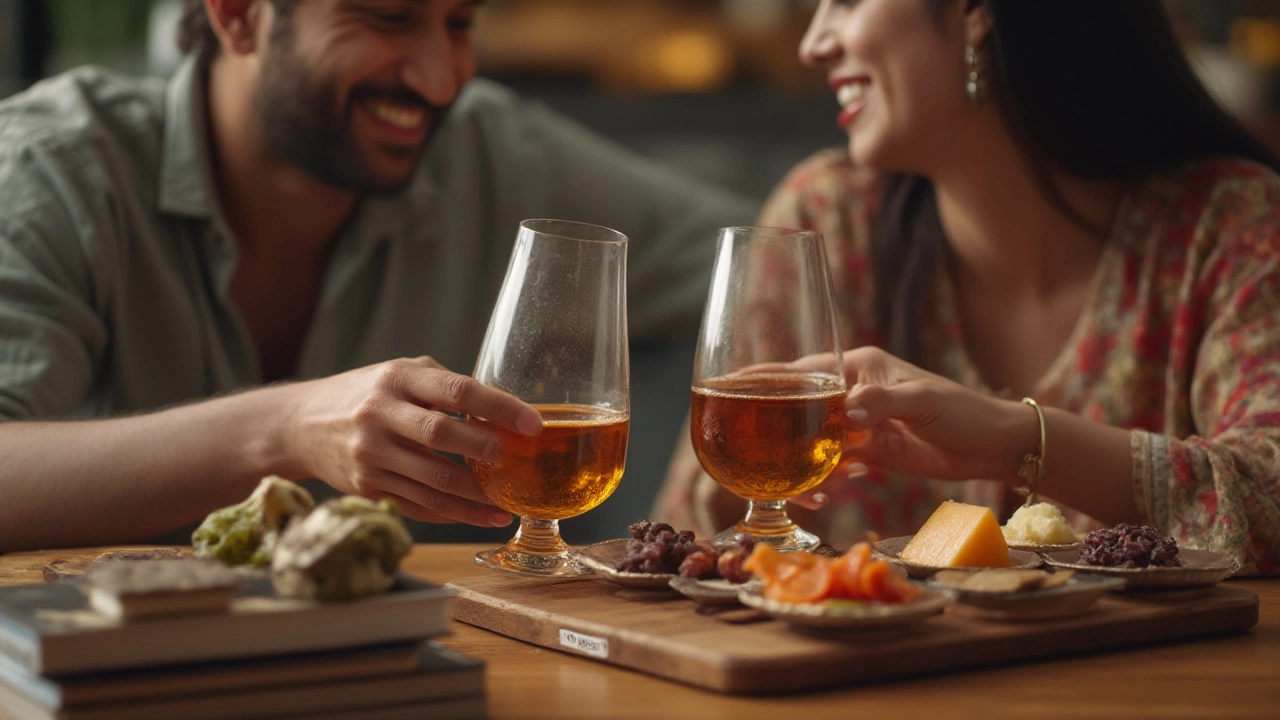
The Art of Tasting: Step-by-Step Whiskey Tasting Process
Ready to taste? Start by looking at your whiskey. Hold it up to the light and check the color—anything from pale gold to deep amber. Long "legs" or "tears" sliding down the glass? That just means there’s a bit more alcohol or sugar. Don’t get too hung up on those details; they’re fun, but the real action happens with your nose. Give the glass a gentle swirl and stick your nose in, taking short, careful sniffs. Don’t inhale too hard if you’re new to this; it’s potent stuff (average whiskey is about 40% alcohol!). Take note if you smell honey, apple, toffee, spices, grass, or smoke. Aromas can give you hints about where the whiskey is from and what's in store on the palate.
Next, take a small sip—just enough to coat your tongue. Let it roll around your mouth before you swallow. Pay attention to what you notice first: is it sweet or spicy or a bit hot? As the flavor settles, see what else you can identify. Does it change? Some whiskeys start sugary and get peppery or woody, while others might reveal floral or nutty notes.
The finish is key. How long does the taste linger? Some whiskies stick around for ages; others vanish in a flash. This is called the finish, and it’s the detail you’ll hear about the most from experienced tasters. If the flavor lasts (a "long finish"), it usually means more complexity—think bittersweet chocolate, dried fruit, toasted oak. If it slips away quickly (a "short finish"), that isn't a bad thing; it’s just different.
Here’s a pro tip: add a few drops of water to your whiskey after your first taste. Water releases more aroma molecules, so you might suddenly pick up on flavors you missed. Some whiskeys mellow out and open up; others might become too diluted. The point of a tasting is to experiment—don’t be afraid to play around.
And yes, you’ll probably taste alcohol “burn” the first few times. That’s normal! Over time, your taste buds and nose start picking out other notes behind that heat. It’s not about academic skill; it’s just practice. Some people taste cinnamon, burnt sugar, orange peel, pencil shavings, toasted coconut… you don’t need to use fancy descriptors, just describe what’s actually happening inside your mouth.
If you want a simple worksheet, try making notes in three columns: nose, palate, finish. Under each one, jot keywords (“fruity,” “smoky,” “oaky,” “sweet”), then add your guesses. Did this whisky remind you of baked apples? Or did it have that bonfire smell you get on chilly autumn nights? The point is to build up your own "library" of tastes, so you’ll know exactly what you like the next time you shop.
Here’s a quick table with four basic whiskey styles and what you might expect from their flavors:
| Type | Typical Flavors | Region | Example |
|---|---|---|---|
| Bourbon | Vanilla, caramel, oak, spice | USA | Maker's Mark |
| Single Malt Scotch | Honey, peat smoke, heather, dried fruit | Scotland | Glenlivet 12 |
| Irish Whiskey | Light, smooth, apple, malt, floral | Ireland | Jameson |
| Japanese Whisky | Elegance, fruit, a touch of smoke, clean finish | Japan | Hibiki Harmony |
The more you taste, the better you become at picking out these subtleties. And don’t worry: even seasoned experts sometimes disagree. Part of the fun is finding what you love, not chasing someone else’s favorites.
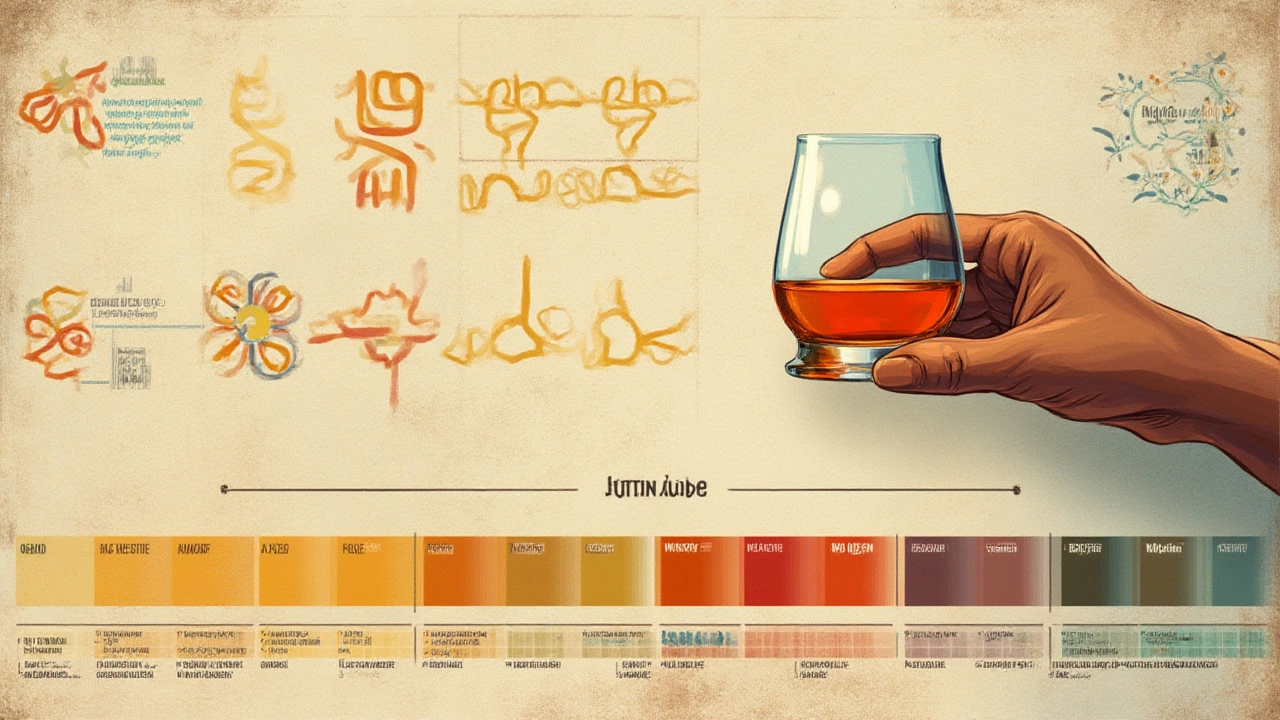
Hosting Your First Whiskey Tasting: Tips for a Great Experience
Planning to host a tasting for friends or family? Keep it low pressure, especially if it's everyone's first time. You don’t need a tuxedo and silver trays—just create a comfortable vibe. Set out all the bottles and glasses on a central table. A printed tasting sheet with a spot for people’s notes feels official—and helps everyone track what they’re sipping (“wait, was C the smoky one or D?”).
Start the night by pouring small amounts—usually about 20ml per sample. You want everyone clear-headed, not blurry-eyed. Most tastings stick to four or five whiskeys, max. That’s enough for variety, but not so much that flavors get muddled or people lose focus.
You’ll want water pitchers and basic snacks, like crackers and mild cheese. Don’t serve spicy or super-aromatic foods—those will overpower your palate faster than you think. Light, unsalted nuts or apple slices are winners. If anyone craves something sweet, plain shortbread or oat cookies work, but keep chocolate or mint for later.
Pace matters. After each round, chat about what everyone tasted, and encourage honest reactions. Some people might catch notes of banana or clove, others might say “I just taste whiskey!”—That’s completely normal. Avoid correcting people or pushing towards the “right” answer. Young palates are often better at picking up surprise flavors anyway. Share memories or associations (“This reminds me of baking with my grandma” or "It's like a campfire"). It makes the experience richer.
If someone asks how long to swirl, sniff, or sip, there’s no timer—just go slow enough to pay attention. Some experienced tasters take two or three tries at each glass. Let the conversation bounce between tasting notes, whiskey trivia, and ordinary life—it's about good conversation more than perfection. If you want, set a theme: try only bourbons, or just world whiskeys, or whiskies aged in wine barrels. But the best themes keep people excited and open-minded.
Before the night ends, talk about favorites. Which bottle should you keep in the cabinet? Which one didn’t land? It helps to keep track, because people’s tastes evolve fast. If you’re planning a second tasting, rotate someone else into the role of “host,” so everyone learns together. Trust me, someone always brings a new bottle that changes everything.
Here are a few memorable whiskey tasting tips:
- Rinse your glass between samples with a splash of water, not soap.
- If you’re outdoors, pick a calm night—the wind can scatter aromas.
- Avoid strong perfumes or scented lotions during the tasting session.
- If possible, cover your poured whiskey with a small card between rounds to trap aromas.
- Store open bottles upright and away from sunlight. Age doesn’t matter on the shelf like it does in a barrel—it’s exposure to air that changes your whiskey after opening.
The big takeaway? Even the most acclaimed whiskey critics started as beginners. Nobody can pick out twenty aromas on their first go. The more you relax, the more fun you’ll have—and your nose will keep surprising you. The world of whiskey isn’t closed off. A good tasting is really about discovery, stories, and learning what makes that golden liquid in your glass special to you.
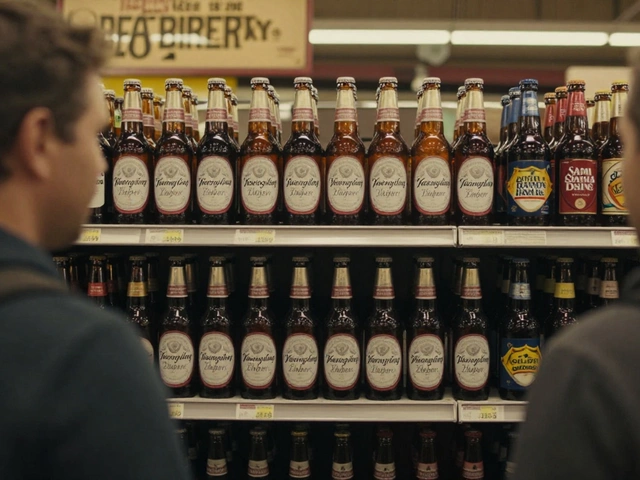
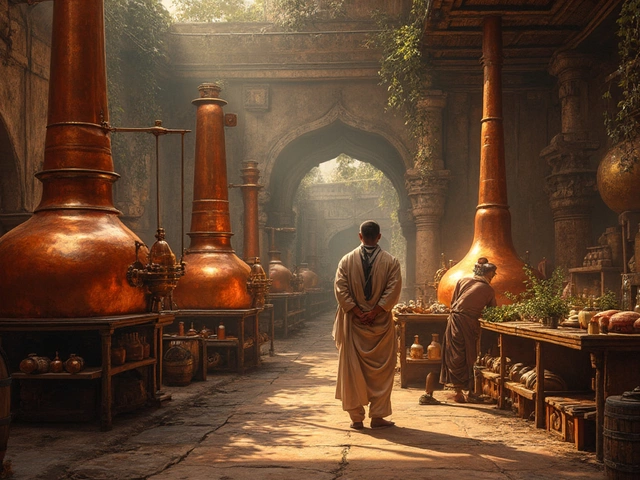
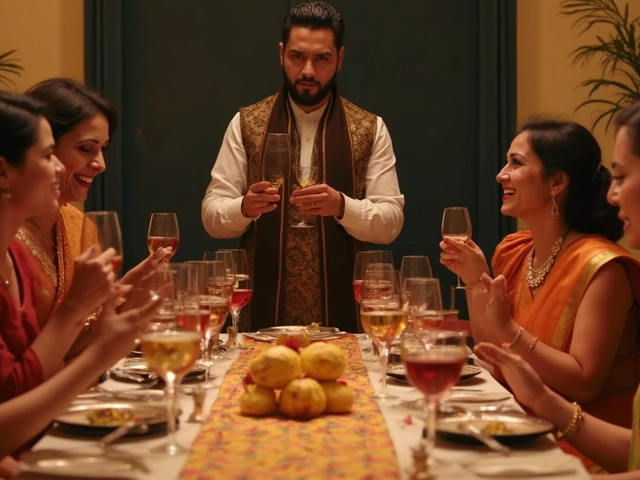
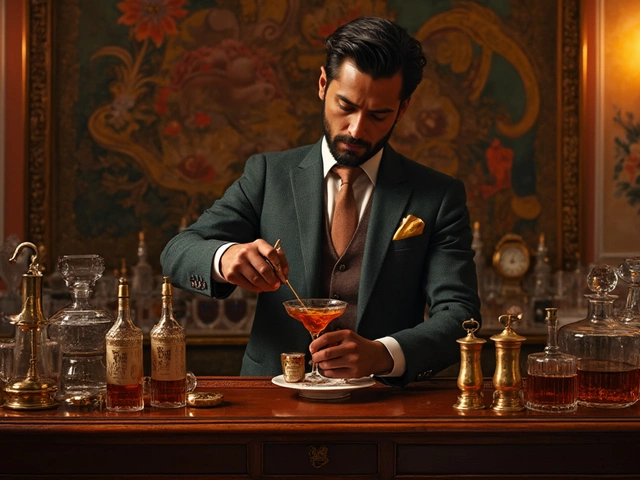

Categories